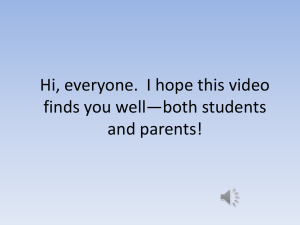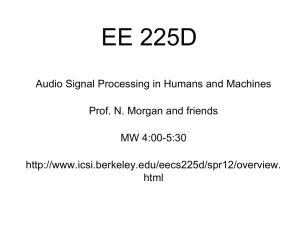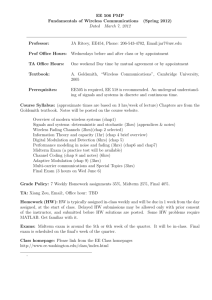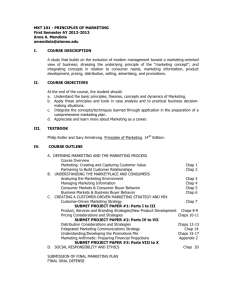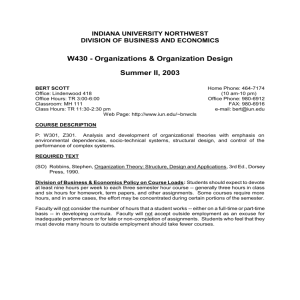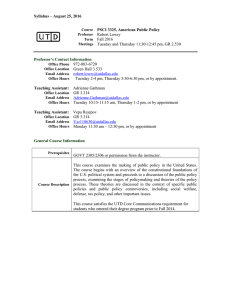Syllabus Moses, Jesus and Muhammad REL 3320 Professor Erik
advertisement
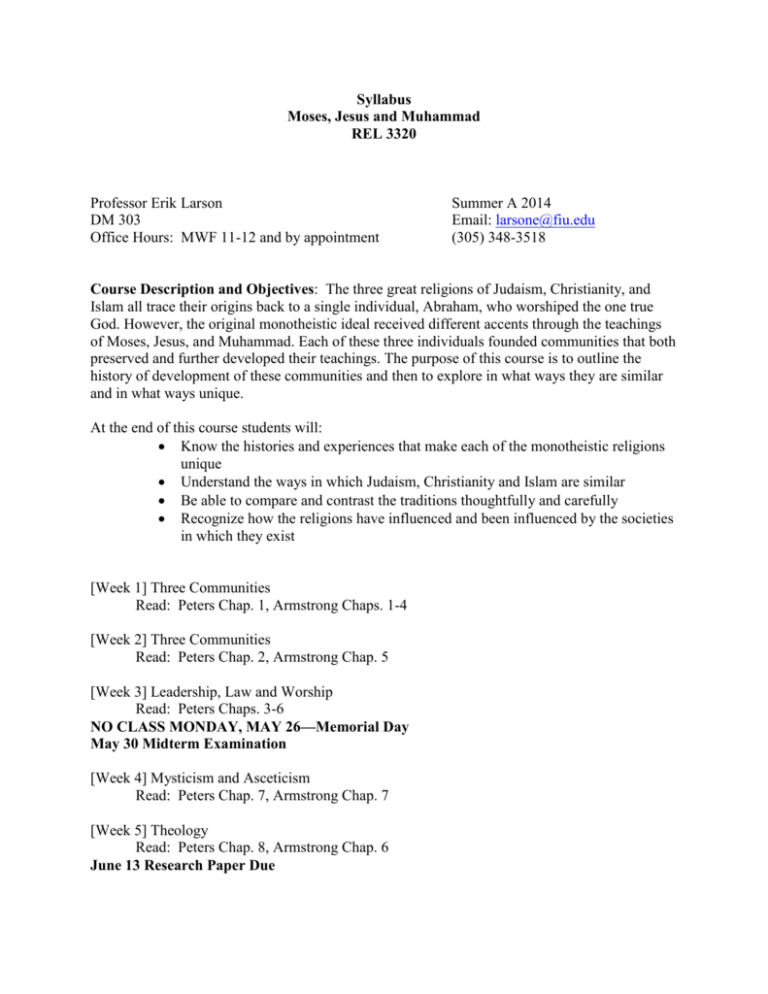
Syllabus Moses, Jesus and Muhammad REL 3320 Professor Erik Larson DM 303 Office Hours: MWF 11-12 and by appointment Summer A 2014 Email: larsone@fiu.edu (305) 348-3518 Course Description and Objectives: The three great religions of Judaism, Christianity, and Islam all trace their origins back to a single individual, Abraham, who worshiped the one true God. However, the original monotheistic ideal received different accents through the teachings of Moses, Jesus, and Muhammad. Each of these three individuals founded communities that both preserved and further developed their teachings. The purpose of this course is to outline the history of development of these communities and then to explore in what ways they are similar and in what ways unique. At the end of this course students will: Know the histories and experiences that make each of the monotheistic religions unique Understand the ways in which Judaism, Christianity and Islam are similar Be able to compare and contrast the traditions thoughtfully and carefully Recognize how the religions have influenced and been influenced by the societies in which they exist [Week 1] Three Communities Read: Peters Chap. 1, Armstrong Chaps. 1-4 [Week 2] Three Communities Read: Peters Chap. 2, Armstrong Chap. 5 [Week 3] Leadership, Law and Worship Read: Peters Chaps. 3-6 NO CLASS MONDAY, MAY 26—Memorial Day May 30 Midterm Examination [Week 4] Mysticism and Asceticism Read: Peters Chap. 7, Armstrong Chap. 7 [Week 5] Theology Read: Peters Chap. 8, Armstrong Chap. 6 June 13 Research Paper Due [Week 6] The Last 500 Years Read: Armstrong Chaps. 8-11 June 20 Final Examination Assigned Textbooks: Francis Peters, The Children of Abraham. Princeton, NJ: Princeton University Press, 2004. ISBN: 0691120412 Karen Armstrong, A History of God: The 4,000 Year of Judaism, Christianity and Islam. New York: Ballantine Books, 1993. ISBN: 0345384563 Grading: Midterm Final Research Paper (8-10 pages) Participation 30% 30% 30% 10% Examinations: Both midterm and final examinations will be a combination of multiple choice, fill in the blank, matching and essay questions. The final examination is not cumulative–it covers only material from the second half of the semester. Research Paper: Write a term paper on some topic relating to the course that particularly interests you. The topic should not coincide with one of the segments of our course (such as Mysticism), but it may further develop an aspect of one of them (such as a particular Mystic teacher that we didn’t have time fully to explore). The topic must receive the approval of the instructor before it is handed in. Paper length should be 6-9 pages in length, excluding bibliography. Each paper is to be printed or typed, not handwritten, with lines double-spaced. Margins for the pages should be 1 inch on all sides and the style should conform to some standard such as MLA or the Chicago Manual of Style. In the body of the paper you may use either footnotes or endnotes. Academic Conduct: Florida International University is a community dedicated to generating and imparting knowledge through excellent teaching and research, the rigorous and respectful exchange of ideas, and community service. All students should respect the right of others to have an equitable opportunity to learn and honestly demonstrate the quality of their learning. Therefore, all students are expected to adhere to a standard of academic conduct, which demonstrates respect for themselves, their fellow students, and the educational mission of the University. All students are deemed by the University to understand that if they are found responsible for academic misconduct, they will be subject to the Academic Misconduct procedures and sanctions, as outlined in the Student Handbook. Academic Honesty: Each student is expected to do his or her own work. It is absolutely unacceptable to submit someone else’s work as your own. This is plagiarism and will result in a failing grade (F) for the assignment and possible disciplinary action. Thus, when in the course of writing your paper you quote or paraphrase an idea found in one of your sources you must give credit to the original author (usually by means of a footnote). Syllabus Note on Internet Use in Research: You may cite from the internet in your term papers, but you must be discerning. Anyone can post “information” on the internet, and thus some of what is there is inaccurate, incomplete, and sometimes even blatantly untrue. As in print collections in libraries, only scholarly articles on the internet are acceptable as sources for research papers. Internet articles should ideally have authors. Some will list individual authors; others will list institutions as sources. The credibility of the information depends on the credibility of the source. Acceptable sources include individual scholars with academic credentials, educational institutions (e.g., Institute of Reformation History, Princeton University), publicly supported national or international institutions (e.g. the World Health Organization or the National Institutes of Health) or other well known institutions with credible reputations (e.g. the World Council of Churches, the Childrens’ Defense Fund). Most educational institutions have addresses which end with the letters “edu.” You must use your judgment since many reputable institutions may not be well known by most students. Also, sometimes websites may list a university as the place from which the material emanates, but which does not sponsor or in any way support the information on that site. (You could set up a website that lists FIU as its origin, and purports that the Pope died last month and was replaced by a ringer!). There will be some internet sources the reliability of which will be difficult to assess. Sometimes you must judge by the tone and range of an article. If it reads like a magazine or newspaper article and cites none of the sources it used, it is not scholarly. You should ask whether the article demonstrates balance: Does it attempt to tell all sides of the story? Does it ask critical questions of the material it covers? How well does its treatment accord with other treatments of the same material you have found? If you would really like to cite an internet article but have doubts about its acceptability, look up the institution or the author on the internet or in the library. Has the author or institution published other works? Have those been reviewed or cited by other scholars? When you cite from the internet, you must list the entire address on the web where you found the information and the date you accessed it. When applicable you must also note any search terms needed within the website to find this particular article when these do not appear within the address. The following are some bibliographic entries: Musa, Edward, “The Art of the Maya.” http://www.unescape.org/pop/journal/v1onaal.htm. 4/27/12. Zarabozo, Jamaal, “Is Family Planning Allowed in Islam?” http://www.albany.edu/~ha4934/famplan.html. 4/21/012.

